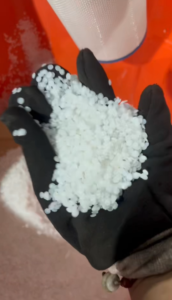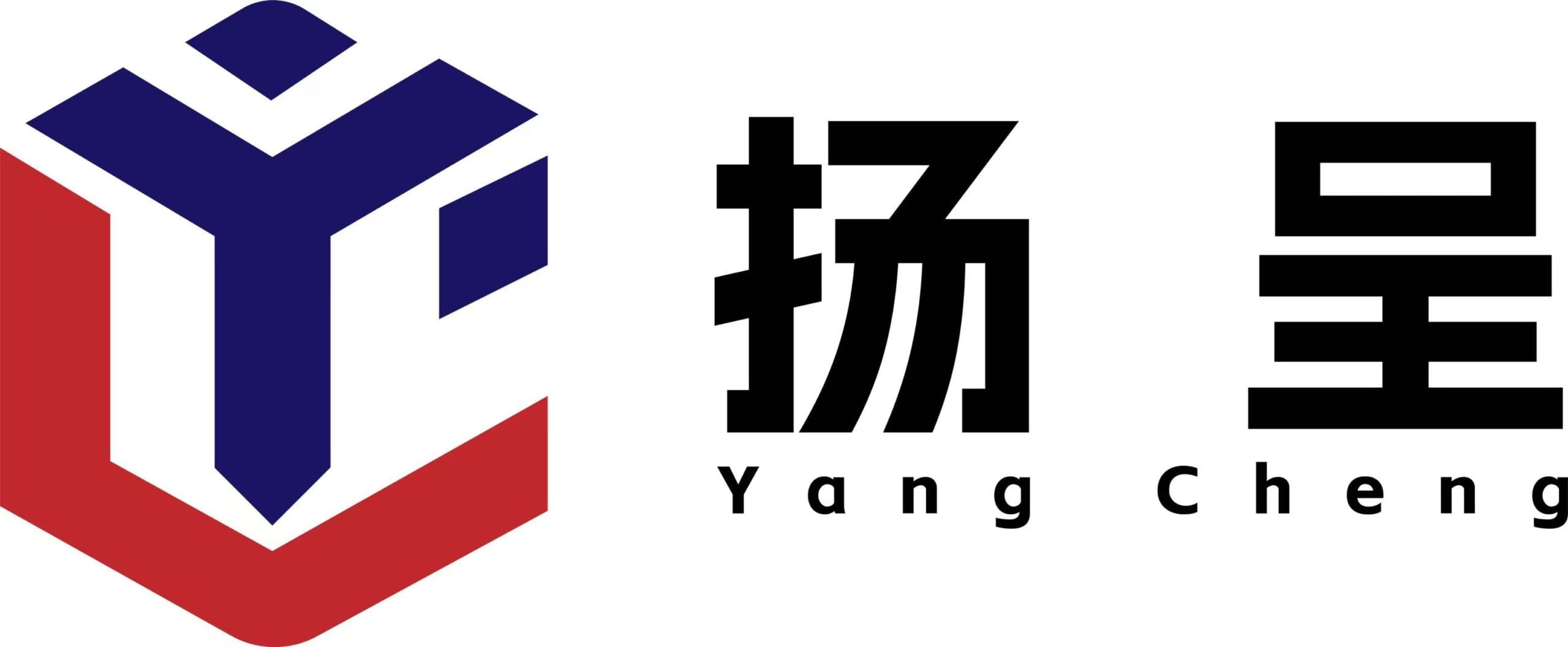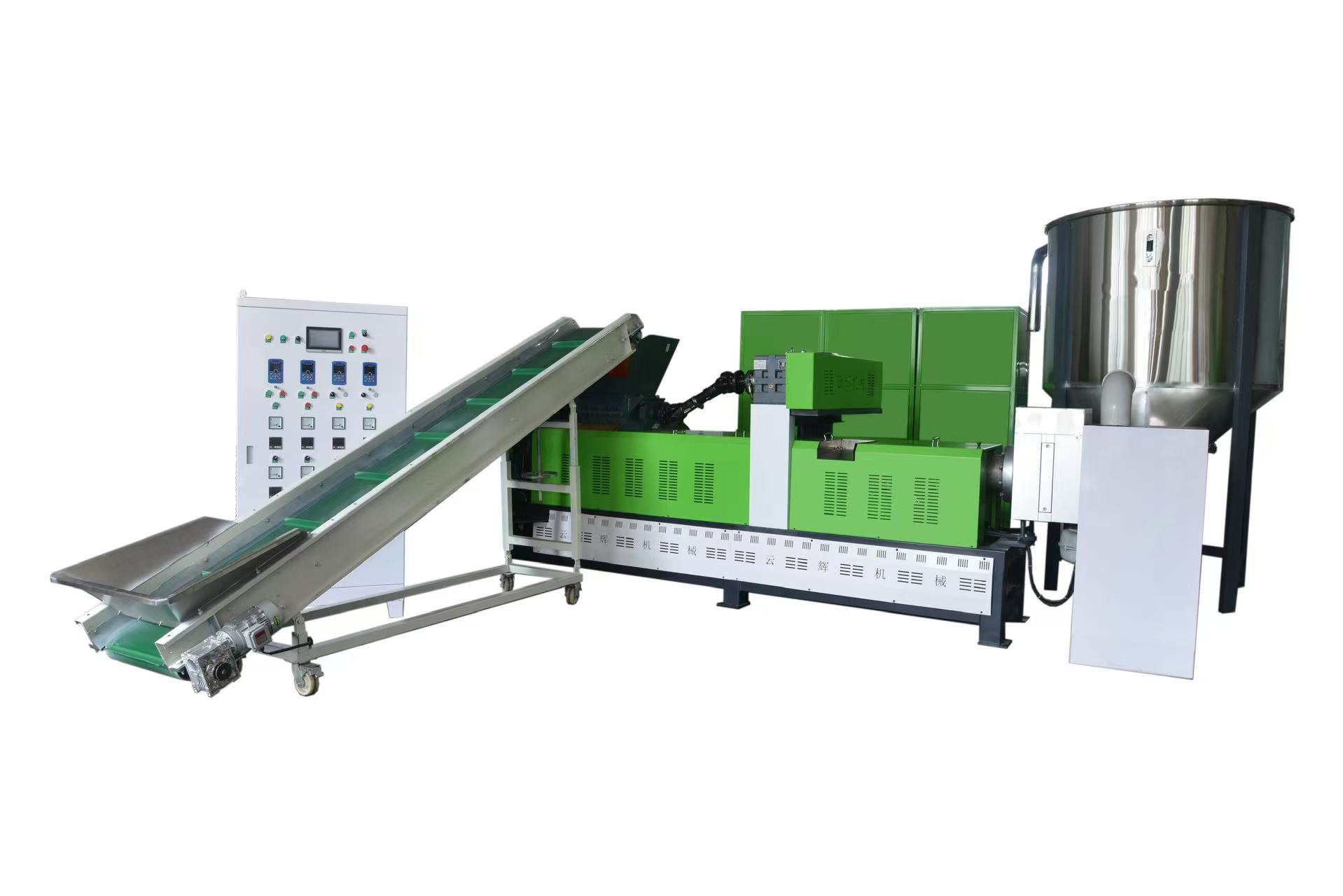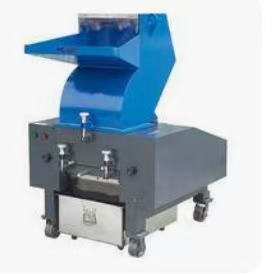The operating principle of water-cooled pelletizers is relatively conventional. After emerging from the extruder die, molten plastic passes through a porous die head, forming multiple strands of elongated molten material. These strands are directly drawn into a cooling water tank, where they undergo rapid cooling and solidification through circulating water flow. Once fully cooled and set, the strands are cut by the pelletizer to form pellets.
Air-cooled pelletizers employ a completely different cooling method. While molten plastic is also extruded through the die, the pelletizing process occurs at the die itself. High-speed rotating blades directly cut the freshly extruded hot melt plastic into pellets. These hot pellets are immediately blown into cooling ducts by a powerful airflow system, where they cool and solidify within the air stream before entering the storage bin. No water is involved throughout this entire process.
Structurally, water-cooled pelletizers require additional components like water tanks, pumps, cooling towers, piping, and filtration systems. They occupy relatively larger floor space and feature more complex designs. In contrast, air-cooled pelletizers consist of an extruder, hot-cut die head, air cooling ducts, and collection bins. Their compact structure minimizes footprint and offers greater flexibility for relocation and installation.

Performance and Pellet Quality Differences
Water-cooled pelletizers offer rapid cooling, quickly solidifying molten strands. This makes them effective for pelletizing certain heat-sensitive materials. However, since pellets are cooled only after cutting, their surfaces may become less smooth due to water vapor contact, potentially developing water marks. Additionally, water-cooled pelletizing demands high operational precision. The strand pull speed and pelletizing speed must be precisely matched; otherwise, issues like strand breakage and clumping may occur, affecting production efficiency and pellet quality.
Air-cooled pelletizers perform cutting and cooling simultaneously. Since pellets are immediately air-cooled after cutting, water marks and moisture residue are avoided. The resulting pellets are drier, fuller, smoother-surfaced, and exhibit stable physical properties. This enhances the value of air-cooled pellets in downstream product manufacturing. Furthermore, air cooling relies less on operator skill, offers higher system automation, and ensures a more stable, reliable production process with reduced susceptibility to strand breakage or clumping.

Environmental Impact and Cost Differences
This represents one of the most fundamental distinctions between water-cooled and air-cooled pelletizers.
The primary drawback of water-cooled pelletizers lies in their water consumption and potential environmental pollution. During operation, vast quantities of cooling water are circulated, yet evaporation and loss necessitate constant replenishment. More critically, the circulating water becomes contaminated with plastic residues, generating wastewater that requires specialized treatment before discharge. This inevitably increases environmental compliance costs and operational burdens for enterprises.
Air-cooled pelletizers completely resolve this issue. Since no water is involved throughout the process, no wastewater is generated, achieving zero discharge. This not only complies with increasingly stringent national environmental regulations but also saves enterprises substantial environmental protection investments. Simultaneously, the air-cooling method eliminates the need for power-consuming equipment like water pumps and cooling towers, significantly reducing electricity consumption. This results in lower operating costs and more pronounced economic benefits.

Scope of Application
Water-cooled pelletizers excel at processing heat-sensitive materials requiring rapid cooling, such as certain engineering plastics.
Air-cooled pelletizers offer broader applicability, particularly excelling in processing soft plastics like PE and PP films. They perfectly handle recycling and pelletizing of diverse materials including LDPE, HDPE, LLDPE, PP, BOPP, CPP, and PS. They are especially suitable for processing waste materials with printed inks, as their waterless cooling prevents ink dissolution in water and subsequent secondary pollution.
Summary
Characteristic Water-Cooled Granulator Air-Cooled Granulator
Working Principle Water cooling followed by pelletizing Hot cutting followed by air cooling
Cooling Medium Water Air
Pellet Quality Surface may show water marks, potentially damp Dry, plump, smooth pellets
Environmental Impact Water consumption, wastewater discharge Zero water usage, no wastewater discharge
Energy Consumption High (requires water pump, cooling tower) Low (no water circulation system)
Maintenance Cost Complex, requires regular water circuit cleaning Simple, no scale or clogging issues
Footprint Relatively large Relatively compact
If you’re interested in our plastic pelletizing machines, contact me.






